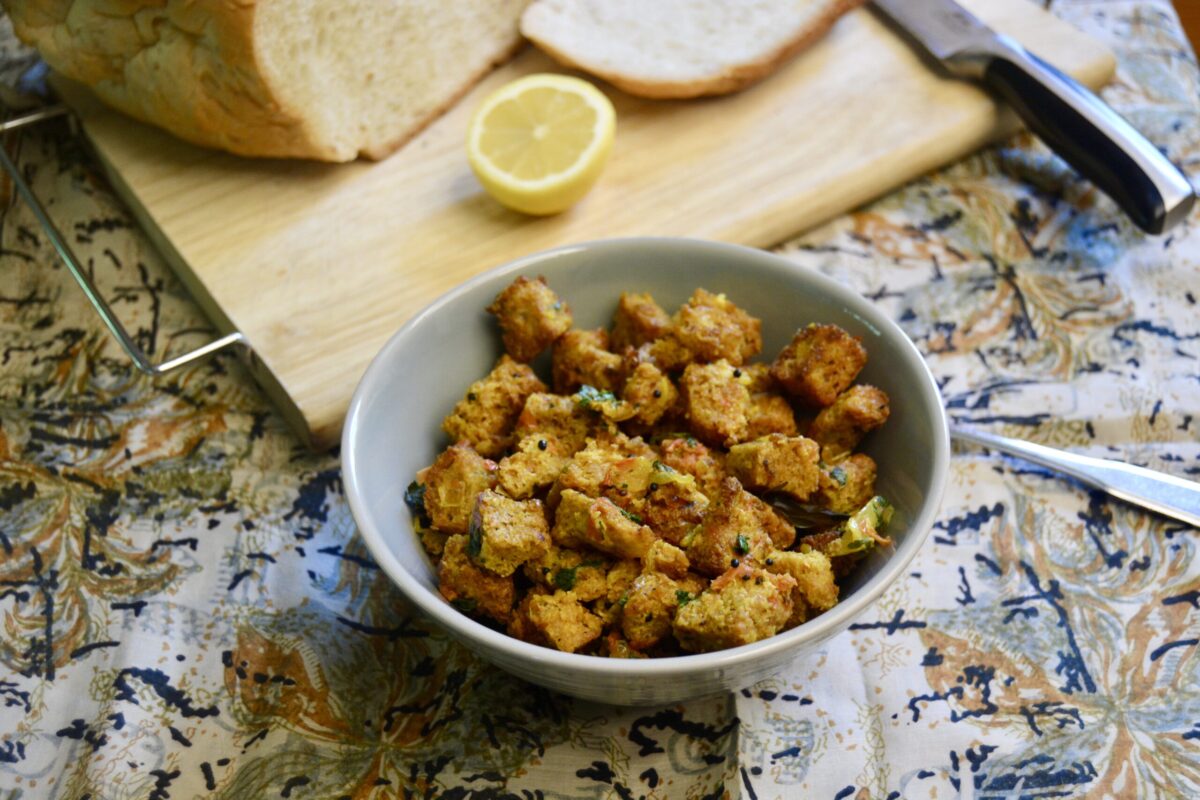Sometimes I get into the mood to bake bread, and I take the easy route. Years ago, when volunteering at our church thrift shop, I picked up an almost brand-new bread machine for less than half the market price. Now when the mood hits for fresh homemade bread, I pull it out and go for it! Today I have a half loaf lying around— a product of five days ago. I decide to fix Bread Uppma for breakfast. Most Indians refer to bread as ‘double roti,’ or simply bread.
Bread uppma is great for breakfast or a tea-time snack. It is savory and tangy, and, of course, who doesn’t love bread!!

Bread Uppama
Ingredients
- 12 slices bread (preferably stale, toasted, and cut into 1-inch cubes)
- 2 tbsp cooking oil
- 1 Serrano chili (chopped one whole red chili optional—to your taste)
- ½ tsp black mustard seeds
- 8-10 curry leaves
- 1 cup onion (chopped finely, yellow or red)
- ½ tsp turmeric powder
- 2 medium tomatoes (chopped-about 1 cup)
- ½ tsp salt
- ½ tsp lemon or lime juice (only)
- ½ cup cocktail or sautéed peanuts or cashew nuts
- 1 tbsp fresh cilantro (coriander leaves) (washed and chopped, for garnish)
Instructions
- In a large skillet, heat the oil on medium heat.
- Add the chopped green chili or red chili. Stir a couple of times and add the mustard seeds. Be careful as they splutter.
- Give it less than 30 seconds, and add the curry leaves. Stir and add the onions.
- Sauté the onions for about 6 minutes until they are translucent and start to turn reddish in the corners.
- Add the tomatoes and sauté for another 4 minutes until the tomatoes are soft and the oil starts to surface.
- Add your choice of nuts (optional) and give them a stir.
- Now stir in the toasted bread cubes until they are nicely coated with the onion and tomato mixture.
- Add a ¼ cup of water. Lower the heat and cover the skillet. Let it cook for 2-3 minutes.
- Remove the lid, sprinkle the juice of half a lemon/lime, and stir. Cover and let it sit for 5 minutes before serving.
- Remove to a serving dish and garnish with the chopped cilantro.

